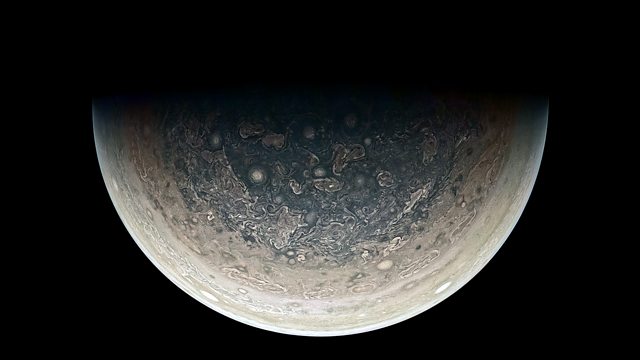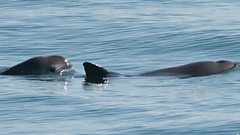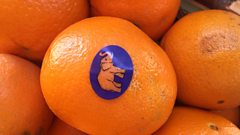Giant Hurricanes at Jupiter’s Poles
Giant hurricanes at Jupiter’s poles also Sherpa’s adaptation to altitude, a last ditch effort to save the Vaquita porpoise and an alternative to labelling fruit.
The first analysis of the observations of Jupiter from NASA’s Juno mission, this includes cyclones clustered at the poles and a massive mega-magnetosphere.
How Sherpas Cope with Low Oxygen
Experiments from the ‘Xtreme Everest 2’ mission uncovers the physiological mechanisms that have evolved in Sherpas to help them adapt to high altitude living. The manner in which they cope with the low oxygen environment of the Himalayas, may help treat hypoxic (low blood oxygen) patients in intensive care.
Saving the Vaquita
Conservationists using US Navy-trained bottlenose dolphins to find the incredibly rare and endangered Vaquita porpoise in the Gulf of California. With fewer than 30 individuals left in the wild, the conservationist's last resort is to try and catch these beautiful, tiny cetaceans and house them in a protected zone.
Fruit Labels
"Bring out the lasers!" Marks and Spencer and other European supermarkets are trying to reduce the waste and environmental burden of having to label every piece of produce by marking them with a very clever laser label.
Picture credit: NASA
Presenter: Roland Pease
Producer: Fiona Roberts
Last on
More episodes
Clips
-
![]()
Dolphins to the rescue!
Duration: 01:09
-
![]()
Why Sherpas might be the best mountain climbers in the world
Duration: 00:30
-
![]()
Lasering fruit
Duration: 00:49
Broadcasts
- Thu 25 May 2017 19:32GMT91�ȱ� World Service except News Internet
- Fri 26 May 2017 02:32GMT91�ȱ� World Service Americas and the Caribbean
- Fri 26 May 2017 04:32GMT91�ȱ� World Service Online, Australasia, Europe and the Middle East & UK DAB/Freeview only
- Fri 26 May 2017 05:32GMT91�ȱ� World Service South Asia
- Fri 26 May 2017 06:32GMT91�ȱ� World Service East and Southern Africa & East Asia only
- Fri 26 May 2017 13:32GMT91�ȱ� World Service Australasia
Podcast
-
![]()
Science In Action
The 91�ȱ� brings you all the week's science news.





